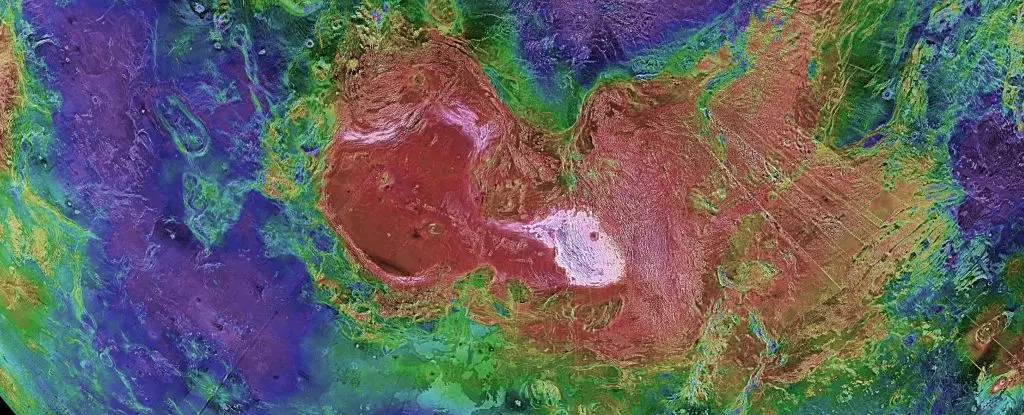Upon closer inspection, Venus and Earth, seemingly like twins, have turned out to be drastically different in terms of their geological features. While Earth boasts a hospitable environment with abundant resources, Venus is plagued by extreme conditions such as toxic gases, acid rain, and scorching temperatures resembling hellish infernos. One striking difference between the two planets is the absence of tectonic plates on Venus, a crucial factor that influences various geological processes on Earth. However, recent discoveries have shed light on unexpected similarities in the geological features of Venus and Earth.
Earth’s crust is known for its complexity, with tectonic plates constantly shifting and interacting with each other. The existence of cratons, which are the oldest parts of Earth’s continental crust, highlights the stability and strength of certain regions. These cratons are believed to have formed first, providing a foundation for the continents to develop and expand over time. The contrast between the terrestrial and oceanic plates in terms of strength and density further contributes to the intricate nature of Earth’s geological makeup.
Despite the limitations on human exploration of Venus, scientists have utilized data from NASA’s Magellan spacecraft to unveil the hidden secrets of the planet’s surface. By focusing on the tesserae region known as the Ishtar Terra, researchers have conducted computer simulations to determine the possible formation processes billions of years ago. Surprisingly, the results indicate that the tesserae on Venus may have formed similarly to Earth’s cratons, emerging from the molten interior and solidifying into the planetary crust. This discovery challenges preconceived notions about Venus’ geological history and its potential parallels to Earth’s early development.
The revelation of shared geological features between Venus and Earth offers valuable insights into planetary evolution and habitability. The timing of when these similarities emerged, post-craton formation but pre-plate tectonics, suggests a critical period in the planets’ divergent paths. Understanding the dynamics of how geological characteristics evolve on rocky planets like Earth and Venus provides crucial information for unraveling the mysteries of early planetary history. By studying these resemblances, scientists aim to decipher the enigmatic processes that shaped Earth’s geological landscape and potentially uncover clues about the conditions necessary for sustaining life on rocky planets.
The surprising parallels between Venus and Earth’s geological features challenge previous assumptions about the differences between the two planets. The discovery of tesserae on Venus resembling Earth’s cratons illuminates a shared history that may have significant implications for understanding planetary evolution and habitability. By delving deeper into the geological mysteries of these distant siblings, scientists continue to unravel the complexities of our solar system and gain valuable insights into the origins of habitable environments on rocky planets.


Leave a Reply